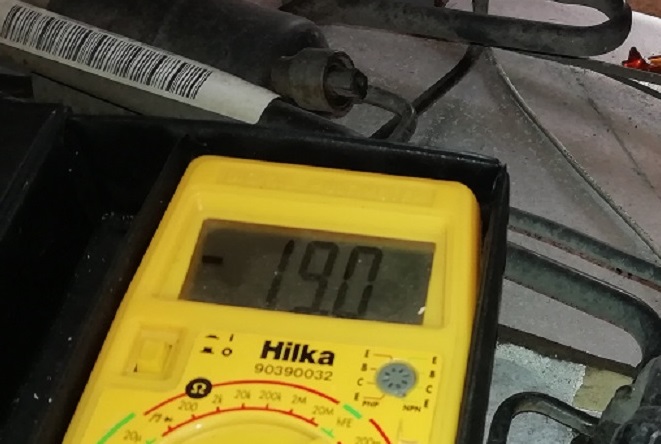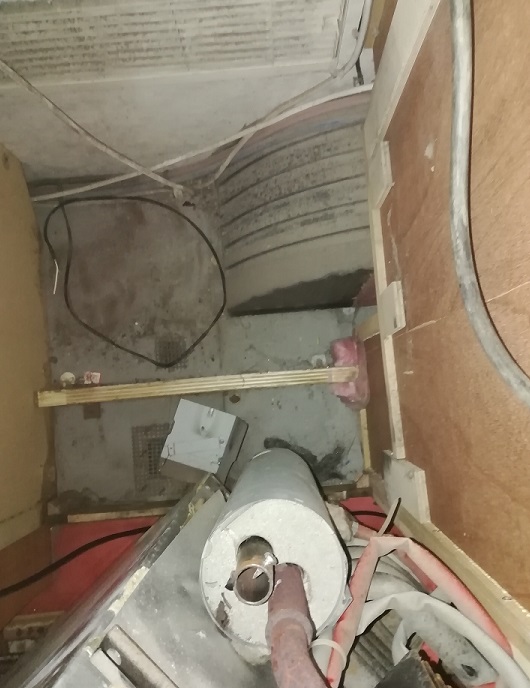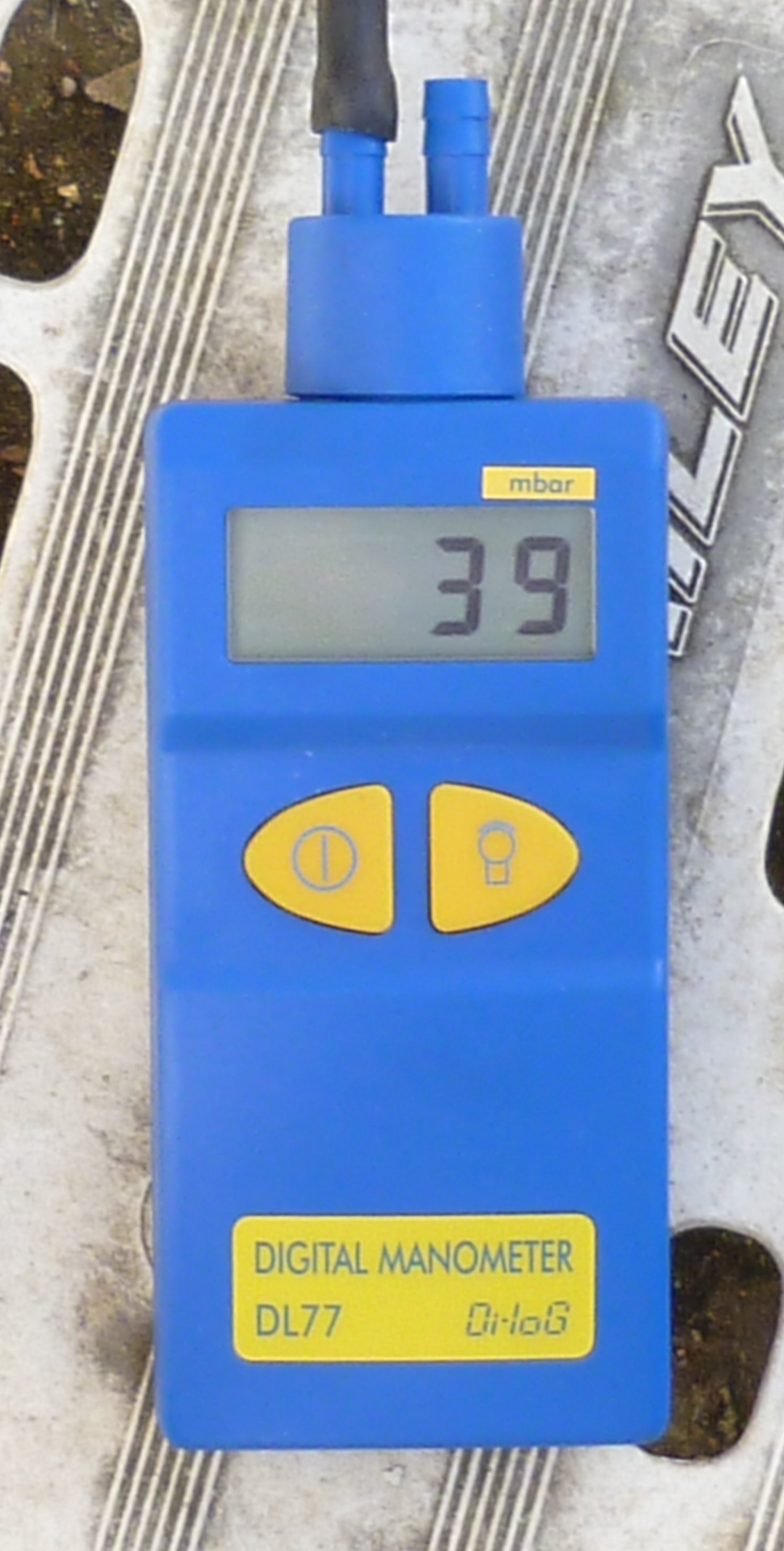I arrived in Portsmouth in the evening to spend the night on the dockside ready for departure at 08.45 the next day. That was towards the end of October last year. The Brittany Ferries guy assured me that I wouldn’t need to move the outfit until 05.30 the next morning, so I locked the car and got settled in the caravan. My fridge was brim-full so the first job was to get it running on gas. But it wasn’t to be. As soon as I released the gas valve, the pilot light went out. Even after holding for several minutes, the light still went out. Finally, I got a walking stick from the car and wedged it between the gas valve plunger and the drawer unit across the gangway. Success! The fridge temperature began to drop. After fifteen minutes I removed the stick – but the pilot light still went out. The fridge had definitely developed a fault. I relit it – and replaced the stick. Throughout the evening the fridge maintained a low temperature and it was fine until the early hours when I needed to limbo dance across to the bathroom!
A note of warning here – there are risks attached to artificially holding open a gas valve. That’s the job of the thermocouple. When the bulb heats up, it sends an ‘open’ signal to the gas valve. As it cools down, the gas valve closes. Now the danger in artificially holding open the valve is that should the pilot light get blown out, the gas valve would remain open, filling the space with gas – causing an explosive situation.
5am – and it was time to start preparing to move so I removed the walking stick and the pilot light went out. I turned the gas off at the bottle. There was definitely a job on the to-do list. Throughout the next four months in Spain, the fridge worked well using on-site electricity. In fact, I didn’t use any gas at all.
Only now, towards the end of May have I got around to thinking about doing some work on the caravan. During the eight years that I’ve owned the van, the fridge hasn’t had any attention so a service was well overdue. But that calls for the fridge to be pulled out. First I removed the four covers inside the fridge and then the screws securing the fridge in its housing. The fridge pulled forward three or four inches but then was held because of the gas supply pipe. To reach that, I had to remove the sink. Once that was out, the compression fitting on the gas pipe could be loosened and the joint pulled apart. Next, the two electric cables were disconnected. After that was done, the fridge was free to pull forward, out of its housing and laid on its front.
First, the burner cover was removed and the burner itself was unscrewed.

With the gas union disconnected, the tiny jet was shaken out. It’s important that the hole in the jet isn’t probed – a blast of air is sufficient to clear any debris. Fitted on either side of the gas supply are the thermocouple bulb and the piezo spark igniter.

Both needed to be removed. After taking out the baffle from the chimney, I used a long wire brush to remove soot, rust and other debris inside the chimney, followed by a hard blow-through. Next, it was time to test the thermocouple so the nipple was unscrewed from the gas valve.

With a candle flame applied to the thermocouple bulb, using a voltmeter, a reading was taken. It showed a little over 19mV.

Using some wire wool, I gave the bulb a clean and took another reading. Just the same. A satisfactory reading would have been in excess of 25. Fortunately, I had a new thermocouple on standby. Not identical but the same length. New thermocouples are available from caravan dealers for around £40+ but they are also available on eBay from a tenner and they all use similar unions. They come in various lengths. The burner was reassembled and re-fixed at the bottom of the chimney. With the fridge standing on its base, I connected a temporary pipe across the break in the gas supply pipe. When the gas cleared from the pipework, I held the gas valve open, pressed the piezo plunger a few times and saw the gas ignite. After a few seconds, I released the gas valve and the pilot continued to burn. Success!
As they say in Haynes – refitting is a reversal of removal. It’s quite a struggle to get the fridge back into its housing because of its weight and the fact that the fridge requires lifting onto two wooden bearers.

If parts are carefully laid out as they are removed, nothing is missed on reassembly. Once the fridge was secured, the sink could be replaced. The flue was correctly positioned working from the outside through the top fridge vent.

Finally, with the gas bottle turned on, the oven was lit, the fire was lit and the fridge started. A manometer was connected to the gas supply and the appliances were turned off, one by one. Then the gas bottle was turned off leaving the manometer showing a reading of 39mb.

It was gratifying to go for a coffee, and then come back to see the pressure was holding.
Finally, with the gas bottle turned on, the oven was lit, the fire was lit and the fridge started. A manometer was connected to the gas supply and the appliances were turned off, one by one. Then the gas bottle was turned off leaving the manometer showing a reading of 39mb. It was gratifying to go for a coffee, and then come back to see the pressure was holding.